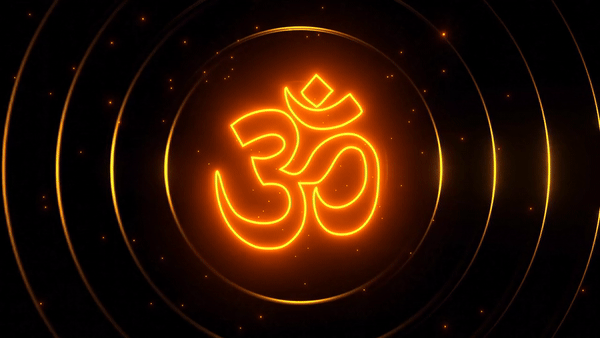
Upanayanam Ceremony is also called the White thread (Poonal Kalyanam) ceremony. It is done to the “Boy child” of the family when he is ready to learn the Vedic mantras and start with a new journey in his life growing up as an adult.
Upanayanam Ceremony is performed for the boy child when he attains the proper age where he is ready to learn all the Vedas, mantras and perform sandhyavandhanam every day.
It is the process of wearing the sacred white thread (three white threads) along with Deerskin and Brahma Mudichi (Brahma Knot) used while performing the Gayathri Japa.
The main rituals performed during Upanayanam are Brahmopadesam and Yagnopavidam. As per the corresponding family Vedas namely Yajur, Rig, Adarvana, or Sama, and the vadhyar of that appropriate Veda will perform the entire ceremony as per that Vedic standard and its mantras. Udaka Shanthi and Nandhi are a vital part of the Upanayanam Pooja Ritual.
On Upanayanam day
After Udakasanthi is Angurarpanam or Paalikai, in which navadhanyas (seeds of nine cereals and pulses) soaked in milk are purified by mantras and sown into 5 pre-
prepared pots or paalikai kinnams by 5 or any odd number sumangalis.
On upanayanam ceremony is performed on boys of at least 7 years of age from the Brahmin varna. The youngster is taught during the ceremony the secret of life through Brahmopadesam (revealing the nature of Brahman, the Ultimate Reality) or the Gayatri mantra. The child then becomes qualified for life as a student or Brahmachari, as prescribed in the Manusmriti. This is called Upanayanam.
Upanayana is a version of the sacred thread ceremony where the concept of Brahman is introduced to a young boy. Traditionally, the ceremony was performed to
mark the point at which boys began their formal education. Brahmins, Kshatriyas and Vaishyas are called dvijas meaning twice born. A man of these castes is born once in the womb of his mother and again during the Upanayana when he learns the Gayatri Mantra.
The significance of Upanayanam:
Upanayanam is traditionally seen as getting a new birth in the spiritual world towards the higher knowledge of the Self. It is an initiation process to learning the sacred chants and mantras according to the Vedic tradition. Upanayanam ceremony is
complete with the wearing of the Yajnopavitam (Sacred Thread) on the body.
The child is initiated into the most sacred Gayatri mantra in the Brahmopadesham ceremony. He is taught the Sandhyāvandanam. The Gayatri mantra is a prayer to invoke brilliance and purity in our intellect and consciousness. The three threads in the Yagnopaveetam represent the responsibility towards the one self, family and society.
During Upanayanam, the great Gayatri Mantra is imparted to the participant as it is considered as the greatest of all upadesams and is called “Brahmopadesam”.
The other importance of Upanayanam in step by step:
1. samidadhana homam..it is a prayer to the God of Fire, Agni for the child’s long life, intellect, courage etc.,
2. Yagnopaveetha Dharanam…The father places the sacred thread across the child’s left shoulder under the advice of Guru, pandits. The sacred thread consists of three strands signifying Brahmma, vishnu, and shiva. This represents actually jnana, karma
and bhakthi. Next moonji a girdle made out the mooja grass (dharbai grass) is tied around the waist of the child. This is to protect his purity and to keep evils away.
3. Kumarabhojanam..The boy is fed along with one or two other brammacharis, a symbolised function that he too with brammacharis. It’s a function to learn how to eat after doing parisheshanam.
4. Brahmopadesam…The Gayatri mantra is a supreme mantra and protects those who recite it. The boy’s father becomes his GURU and whispers into his ears this powerful Gayatri mantra.
5. Soorya Dharshan…The boy to be taken outside and shown the soorya, the sun god. This assumption here is that he will be protected by the sun god. The palms are clasped in such a way that it makes a peep hole to the sun god.
6. The Twig in the right hand.. usually a small stick of peepal tree with green leaves signifies his entry into brahmmacharya. The gods brahmma, vishnu and rudra – all the three devtas reside in the peepal tree is a belief and of course true. Because of holding a small branch of the divine tree of peepal (arasa maram), he receives the grace from the three gods and also saraswati, lakshmi and durga.
7. Bhikshakaranam…The boy symbolically asks for alms of rice from his MOTHER and other married women. This is an important event and this bhikshakaranam was done to make one humble, polite, and control of ego. Also this makes the young vatu (the boy) to control senses, which is absolutely essential for receiving vedic knowledge.
8. Abhivathanam After upanayanam, the boy seeks the blessings of the all the elders present by saluting them on their feet with shashtanga namashkar. This abhivathanam, the boy introduce himself by his rishi, parampara, gothram, suthram and name step by step.
Udagashanthi
4 Vadhyars or 8 Vadyars
Note:- The above written total cost varies according to muhurtham day and time. To get a better understanding kindly call us.
Naandhi Shraddam
9 Vadyars
Note:- The above written total cost varies according to muhurtham day and time. To get a better understanding kindly call us.
Upanayanam
2 Vadyars or 4 Vadyars
Note:- The above written total cost varies according to muhurtham day and time. To get a better understanding kindly call us.


